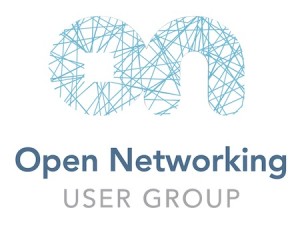The many ‘modes’ of multimode
Fiber types are differentiated as multimode or single mode. Single mode was always easy for me to understand but I could never quite understand what ‘multimode’ actually meant. I’m written some notes for myself on this topic that I thought I’d … Continue reading
The post The many ‘modes’ of multimode appeared first on The Network Sherpa.
Highlights from the Docker Project’s first open-source-a-thon
Today we are nearing the end of the Docker Open-Source-a-Thon that kicked off with the Docker birthday party! Here’s an update about the fun times we’ve had so far. We have had over 20 fantastic events across the world, with … ContinuedMasscanning for MS15-034
So Microsoft has an important web-server bug, so naturally I'd like to scan the Internet for it. I'm running the scan now, but I'm not sure it's going to give any useful results.The bug comes from adding the following header to a web request like the following
Range: bytes=0-18446744073709551615As you can see, it's just a standard (64-bit) integer overflow, where 18446744073709551615 equals -1.
That specific header is harmless, it appears that other variations are the ones that may cause a problem. However, it serves as a useful check to see if the server is patched. If the server is unpatched, it'll return the following error:
HTTP/1.1 416 Requested Range Not SatisfiableFrom the PoC's say, a response that looks like the following means that it is patched:
The request has an invalid header nameHowever, when I run the scan across the Internet, I'm getting the following sorts of responses from servers claiming to be IIS:
HTTP/1.1 200 OK
HTTP/1.1 206 Partial Content
HTTP/1.1 301 Moved Permanently
HTTP/1.1 302 Object moved
HTTP/1.1 302 Found
HTTP/1.1 302 Redirect
HTTP/1.1 401 Unauthorized
HTTP/1.1 403 Forbidden
HTTP/1.1 404 Object Not Found
Continue reading
Running an etcd 2.0 Cluster on Ubuntu 14.04
In this post, I’m going to show you how to set up a cluster of three nodes running etcd 2.0 (specifically, etcd 2.0.9). While I’ve discussed etcd before, that was in the context of using etcd with CoreOS Linux. In this case, I’ll use Ubuntu 14.04 as the base OS, along with the latest released version of etcd.
To help you follow along, I’ve created a set of files that will allow you to use Vagrant to turn up an etcd 2.0 cluster on Ubuntu 14.04 (on your laptop, if so desired). You can find all these files in the “etcd-2.0” directory of my learning-tools GitHub repository.
Installing the Base OS
You don’t need anything special when setting up etcd; a straightforward Ubuntu Server 14.04 x64 installation will work just fine. If you’re using the files in my learning-tools repository, you’ll see that Vagrant simply turns up a VM based on a plain-jane Ubuntu 14.04 box. If you’re building this from scratch (why?!), simply create a VM and install Ubuntu 14.04 into it. As long as it has Internet connectivity, that’s all that’s needed.
Installing etcd
Installing etcd Continue reading
Intel Backs Skyport’s Security Dream Team in $30M Round
 Big names, big money, but few details on an actual product.
Big names, big money, but few details on an actual product.
Another Quad CCIE in downunder
Is it possible to study a PhD, CCIE Data Center with a full time job? Absolutely YES, I have been there and done that. I also went on 5 work related overseas trips and 2-3 weeks on holiday, driven around the country town in Australia. If someone tells you that they saw a ghost and […]Curious About ONUG? Wonder What It Is?

In case you’re interested in ONUG or wondering what the heck ONUG stands for, I write a short post called What Is An “ONUG” over at GestaltIT. I’m not going to duplicate it here, so please do the clicky over to GestaltIT and have a read. Bonus: there’s a registration discount code over there as well! Hope you enjoy it; ONUG looks like it’ll be very interesting.
Disclosure
My post at GestaltIT is a sponsored post as part of the ONUG Spring 2015 Tech Talk Series, part of the larger Tech Talks series.
If you liked this post, please do click through to the source at Curious About ONUG? Wonder What It Is? and give me a share/like. Thank you!
